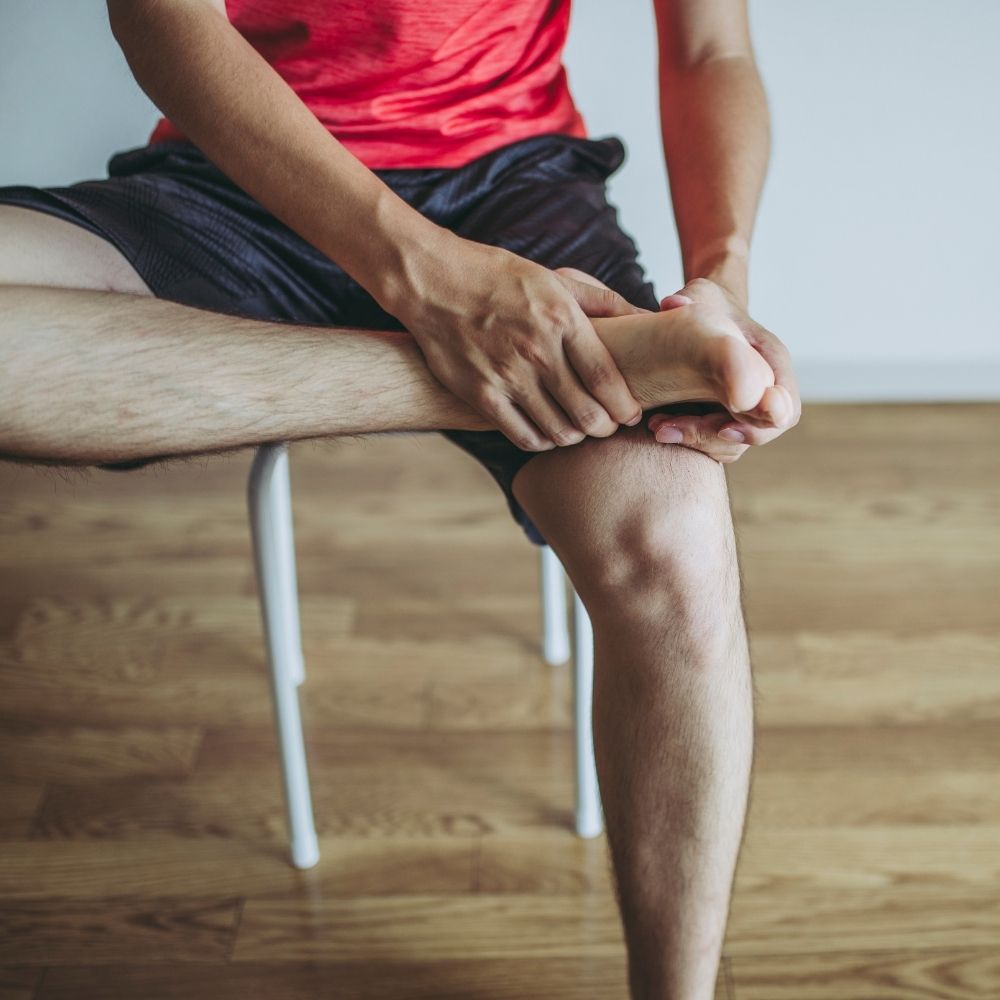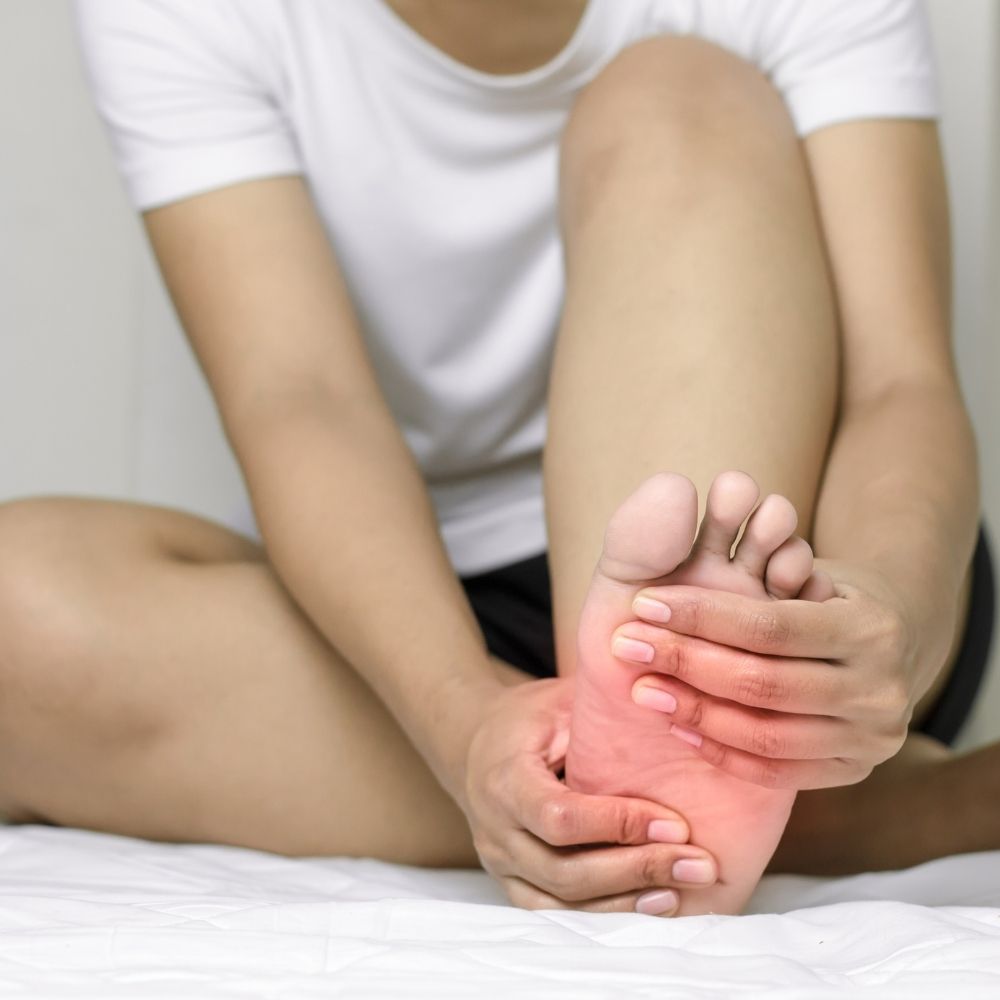Start Living pain free!
New You Medical Center
SERVING RICHMOND, KATY AND SW HOUSTON
As a flexible synovial joint, the ankle allows lots of diverse movement throughout a wide range of tasks and activities. Together with the multiple joints of the foot, the ankle helps us complete movements ranging from a simple flex to highly complex footwork. Whether you’re participating in the simplest of actions, such as walking and running, or practicing something a little more elaborate, our feet and ankles allow us the flexibility while simultaneously helping us stay balanced and supported.
It is not uncommon that individuals experience foot or ankle pain at some point in their lives. Made up of several bones, joints, muscles, and soft tissue, the ankle and foot become widely susceptible to countless injuries and normal wearing down of the joints. Because of the important role our ankles and feet play in our day to day lives, pain in the region can be disruptive, troublesome, and uncomfortable. With little blood flow to the area, healing can also be notoriously slow, perpetuating the pain and discomfort experienced.
Platelet-rich plasma (PRP) therapy is an avenue for relief that addresses pain at the source while empowering the body’s natural healing mechanisms to take place more quickly and more efficiently. Here at New You Stem Cell Center, we dedicate ourselves to equipping each patient with what they need to achieve healing through stem cell therapy and stem cell activation treatments.


Our experiences in the field have equipped us with the skill and expertise to treat a wide variety of patients with PRP and other stem cell procedures. While arthritis and injury are among the first to come to mind when discussing foot and ankle pain, they are joined by a multitude of other conditions that can lead to pain and discomfort in the joint. Below is a list of common pain-causing conditions associated with the ankle and foot:
New You Medical Center
SERVING RICHMOND, KATY AND SW HOUSTON
Unlike medications and cortisone injections that temporarily relieve symptoms associated with ankle pain and foot pain, platelet-rich plasma therapy tackles the source of the pain, mending and fixing what has been damaged due to injury or normal wear and tear. By harnessing the body’s own natural healing processes, the procedure promotes complete recovery and enhanced healing.
After the rich plasma substance is separated from the other components in a patient’s own blood sample, it is then injected into the troubled joint. Because of its high concentration of growth factors and healing proteins, the potent substance begins working immediately once injected, signaling other differentiation-capable base cells to flock to the area. These base cells have the innate capacity to reverse degradation, reduce inflammation, and stimulate healing in tendons, ligaments, bone, and soft tissue. Though this mimics the body’s natural response to damage, PRP quickens the pace and increases the intensity of the healing process, leading to optimal recovery and regeneration.
By rebuilding, mending, and promoting the growth and specialization of new, healthy cells, platelet-rich plasma therapy not only relieves symptoms associated with ankle and foot pain but creates actual long-term healing in the joint.

Numerous factors can influence the degree of pain felt and additional symptoms experienced with foot-related conditions and injuries. While some patients may never feel anything more than pain and discomfort, others may have an array of symptoms brought on by their respective condition or injury. Below is a list of common symptoms experienced by those with ankle-related or foot-related conditions or injuries:
If you are experiencing any of these conditions or have been diagnosed with a joint-related injury or disease, New You in Richmond, Texas is ready to help you take on pain at the source, working towards true healing and long-term regeneration. As we welcome each patient into our clinic, we make sure to provide you with the resources and information you need to start on your journey to pain relief. Contact our clinic today for a free consultation during which our expert staff will answer your questions and get you started with the first steps towards self-healing.
I’ve seen several different doctors about my ankle pain and each suggested that I needed to have surgery. When I heard that New You was doing PRP therapy, I thought it wouldn’t hurt to give it a try. A couple of weeks after my PRP procedure I noticed that I had no pain at all. I would’ve never been able t do that before PRP. I would highly recommend Dr. New You for PRP therapy.
–John T., Patient from Richmond, TX
Individuals suffering from chronic joint pain who haven’t found relief through conventional methods are all great candidates for this procedure. PRP treatments are also a great option for those individuals wanting to avoid invasive treatment and long recovery times that are associated with surgery.
Most PRP patients see considerable improvement within 5 to 10 days of the first treatment, but for long-lasting, optimal results, we recommend having three PRP sessions. Multiple sessions should be scheduled 5 to 6 weeks apart for optimal results. (Written by Leo, Please check for proper grammar, syntax, etc)
All procedures take place at New You Wellness Cell Center in Richmond, Texas.
Because each patient is injected with their own platelets, any adverse reactions are unlikely. Having said that, as with any other minimally-invasive procedure, a very small risk of infection does exist. At New You, we are equipped with the experience and expertise that help keep those risks to a minimum.
Most patients usually begin noticing changes and decreased pain in the troubled area in as little as 5 to 10 days. However, this ultimately depends on the patient and the condition being treated.
Because the PRP treatment is a low-risk, minimally invasive procedure, patients can expect to return to work and daily routines immediately after, as long as their condition permits.
Individuals suffering from chronic joint pain who haven’t found relief through conventional methods are all great candidates for this procedure. PRP treatments are also a great option for those individuals wanting to avoid invasive treatment and long recovery times that are associated with surgery.